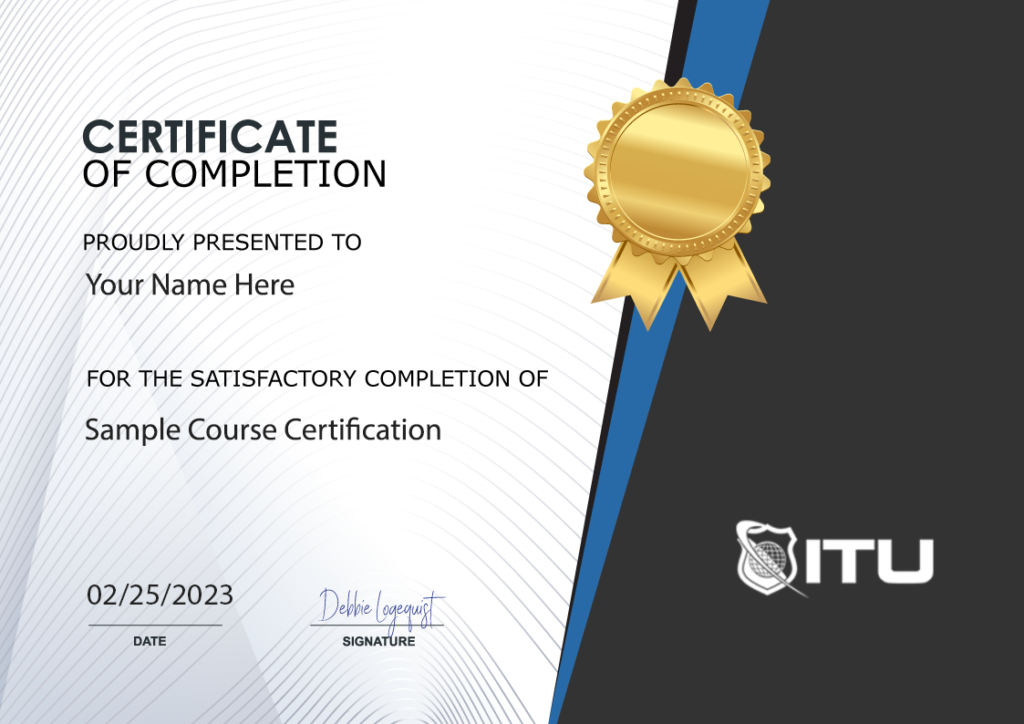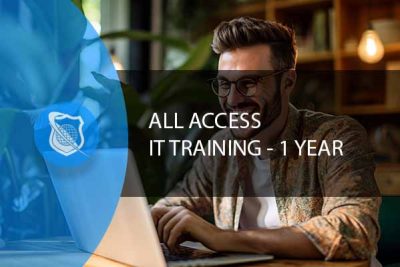
Lifetime
An ITU Online Training exclusive. The only Buy Once, Never Pay for IT training again program available. Plus, get all new and updated content for life.

With an All-Access Pass, you get access to every current and future ITU course. Access over 2,500 hours of on-demand IT Training 24/7. With over 13,000 on-demand training videos and 19,000+ practice questions, you'll have the tools to excel in the critical IT skills needed to elevate your IT Career. Our All-Access pass is available in three affordable plans.
Paris is the capital of France.
Tokyo is the capital of Japan.
Most Popular
Categories


With an All-Access Pass, you get access to every current and future ITU course. Access over 2,500 hours of on-demand IT Training 24/7. With over 13,000 on-demand training videos and 19,000+ practice questions, you'll have the tools to excel in the critical IT skills needed to elevate your IT Career. Our All-Access pass is available in three affordable plans.

ITU provides a vast array of IT-focused on-demand training designed to help you excel in both entry-level and advanced IT skills. Browse our most popular training or take a deper dive into our robust catalog of training categories.
Popular Courses All Categories





The Annual All Access program offers you an affordable option to excel in your IT skillset and advance your career in IT. With access to every course ITU offers, including future courses, sign up today for our Annual All-Access program.
Included In This Course
Closed Captions
Certificate of Completion
Course Description
Our One Year All Access Library Includes
Access our extensive library of over 225 courses and 2,500 hours of instructional videos, taught by our instructors who are industry certified and have over 10+ years of experience in the related field. Content can be accessed anytime to match your busy schedule.
As a 1 Year Unlimited Library All Access subscriber, you will have access to all your training material 24 hours a day, 7 days a week. You can learn at your own pace, and go back to review topics as many times as you need. Plus, our 1 Year All Access Pass includes full access to our entire course library, so you can explore new courses and topics as you continue to grow and develop your skills.
The course material is continuously updated to reflect the latest industry changes. You will have access to all new courses and updates for as long as you remain a subscriber.
Your success is our top priority and we take our responsibility as a partner in your success very seriously. Our students have a 98% first time pass rate on major certification exams.
As technology changes, ITU is focused on delivering new and updated content so as technology changes, you always have access to up-skilling your knowledge through our online training. Looking for the same great training for a team? Be sure to look at our Team Training Packages that offer even greater value for multi-user licenses.
No matter your position in the IT industry, we have something for you. Covering all the best and most widely accepted major disciplines. It adds up to thousands of hours of high-quality online-focused IT training. You can trust ITU to give you an edge in the industry.
ITU is also focused on staying up-to-date. We have a team of instructional designers that are always working on new courses and updates to existing ones. As technology changes, we want to make sure our students are getting the most relevant and useful information possible.
The bottom line: an annual subscription to ITU Online Training is one of the best investments you can make in your professional development. And, since it’s a subscription, you always have access to the latest courses and future course releases at no extra charge. So, why wait? Get started today!
Join the thousands of students who have already benefited from our All Access Library Program!
P.S. – If you’re not sure which course is right for you, our team can help! Just reach out to us at support@ituonline.com.When you sign up for our 1 Year Unlimited Online Access, you’ll get access to our exclusive IT certification training videos that will help you prep for your exams. Plus, you’ll get access to all of our current courses and future course releases during your 1 Year access period at no extra charge. We want you to succeed and we are here for you! You’ll also get downloadable assets from your courses, so you can keep them forever and reference them anytime you need them.
Sign up today and get unlimited access to everything ITU has to offer!
No matter your position in the IT industry, we have something for you. From cloud and data center operations to networking and cybersecurity, we provide training that will help you further your career.
Our comprehensive library of courses covers the most important topics in IT. Whether you’re looking to improve your skills or learn new technologies, we have the resources you need.
Purchasing a library is the most cost-effective IT training you’ll ever buy. Just a few of the best reasons are:

Course Outline
Josh has 15 plus years in account management and client support with over 5 years specifically in the healthcare industry. Josh provides hands-on leadership to the healthcare team at NetDirector by focusing on client success and innovative solutions. As the Healthcare Operations Manager, Josh ensures that each client implementation is completed as efficiently as possible with the greatest impact to the client. He holds a Bachelor of Arts degree from the University of South Florida.
Chrys Thorsen is an education and technology expert who specializes in enterprise-level IT infrastructure consulting and certified training-of-trainers. In her career, she has garnered over 50 IT Certifications including CISSP, CISA, CEHv12, PenTest+, CompTIA CNVP, Cisco CCSI/CCNP, Microsoft Cloud and on-premises technologies, VMware vSphere, and many more. She has also authored 40 published certification textbooks, and over 35 full-length IT certification video courses.
When not working in the United States, Chrys spends her time abroad capacity-building IT literacy in developing nations in Sub-Saharan Africa. Her client list has included: the US Federal Government, the Republic of Zambia Ministry of Health, Cavendish University Zambia, Accenture, JP Morgan Chase, the US Centers for Disease Control and Prevention, the Elizabeth Glaser Pediatric AIDS Foundation (EGPAF), Hughes Aircraft, Microsoft, and many more.
Chrys lives by, and is fond of repeating, her professional creed:
“The only true measure of success for any project or training is results on the ground. Everything else is just noise.” “I teach what I deploy; I deploy what I teach.”
Dean has had fun for the past 20 years learning and teaching everything he can in technology and security. His consulting experience in accounting systems, inventory control, migrations, and patch management has breathed life into his 12 years in the class room. Dean is a courseware developer who specializes in CISSP and security training. He is the lead instructor for Expanding Security and teaches online as his main job. As a non-military person, he is a proud recipient of six mission coins.
Start this course for free with our 10-day trial of the all-access subscription providing access to over 2,600 hours of training.
$279.00 $129.00

Monthly All-Access Subscription
7 Days Free - $39.00 / month
A great option at an affordable monthly price.
Annual All-Access Subscription
$229 / year
A discounted price when paying for your All Access library on an annual basis.
Lifetime All-Access Library
$379 One time payment
Exceptional Value. Pay once, never have to buy IT training again.
$124.50 / month for 2 months
The monthly All Access program offers you an affordable option to excel in your IT skillset and advance your career in IT. With access to every course ITU offers, including future courses, sign up today for our monthly All-Access program.
$49.99 $14.99 / month with a 10-day free trial
The monthly All Access program offers you an affordable option to excel in your IT skillset and advance your career in IT. With access to every course ITU offers, including future courses, sign up today for our monthly All-Access program.
$279.00 / year
The Annual All Access program offers you an affordable option to excel in your IT skillset and advance your career in IT. With access to every course ITU offers, including future courses, sign up today for our Annual All-Access program.

Unlock endless learning opportunities with over 2,500 hours of IT training at our lowest price ever. Plus, get all new and updated online courses for free while your subscription remains active.
Cancel at your convenience. This exceptional deal on IT training provides you access to high-quality IT education at the lowest monthly subscription rate in the market. Boost your IT skills and join our journey towards a smarter tomorrow.
Mary Beth helped me. She was wonderful.